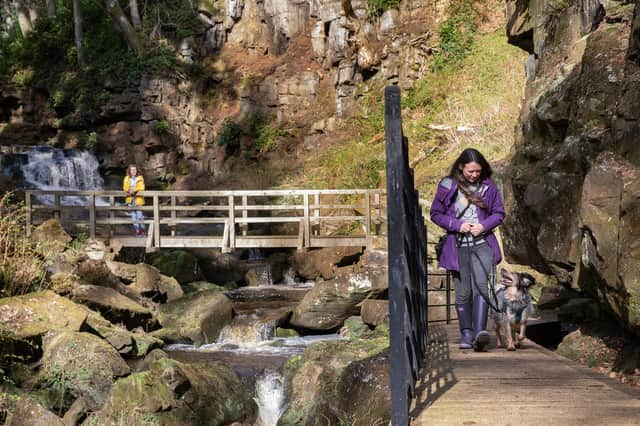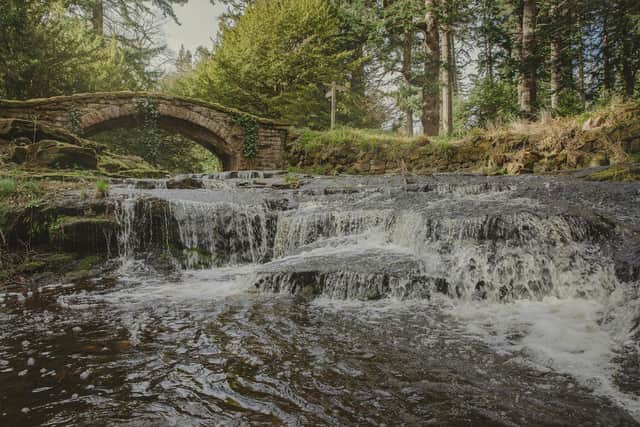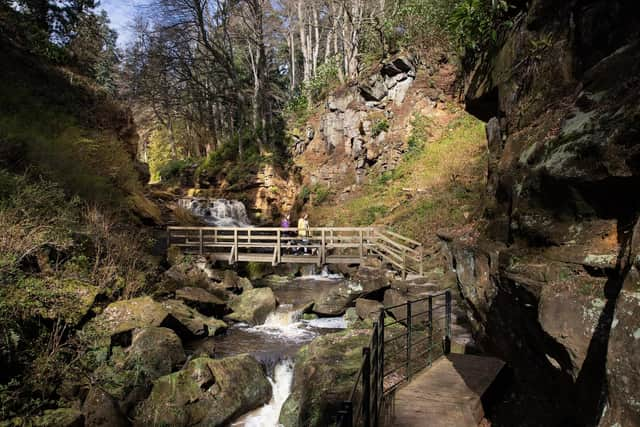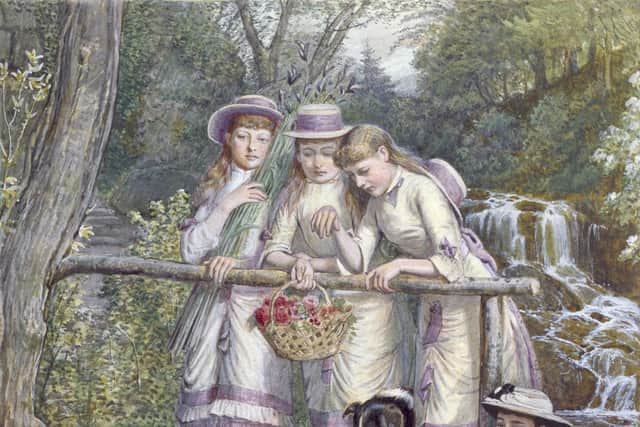Gorge-ous walk opens at Cragside in Northumberland


Nestled between the giant conifer trees in the Pinetum and the Powerhouse - the hub for William Armstrong’s hydro-electricity generation – the gorge is a spectacular rocky valley with tumbling waterfalls.
Cragside House, near Rothbury, was illuminated by hydro-electricity and powered by hydraulics, fuelled by the water from man-made lakes.
Advertisement
Hide AdAdvertisement
Hide AdArmstrong shaped the landscape and used it as a vast experimental testing ground to harness the power of water.


However, when the Armstrongs moved to Cragside in 1863, the estate looked very different.
It was a heathery rocky moorland where very little grew. But with a spectacular vision, the Armstrongs landscaped the estate on a colossal scale.
They planted a vast woodland including a Pinetum which is now home to some of the tallest trees of their kind in the country. They created a Formal Garden filled with flowers and fruits and a Rock Garden covered with rhododendron and azaleas.
Sitting within this landscape is the gorge.


Advertisement
Hide AdAdvertisement
Hide AdIt has always been a natural waterway for the Debdon Burn to the Coquet River.
With a dramatic vision for landscaping on a big scale, Armstrong blasted the gorge to increase the flow of water.
Not only that, the rocks and boulders were carefully re-arranged to engineer the most impressive cascade to add further drama to an already extraordinary landscape.
Sturdy footwear and an adventurous spirit are essential for exploring the new route.


Advertisement
Hide AdAdvertisement
Hide AdVisitors will walk along steps carved into the rock, and stroll across timber bridges to admire waterfalls and craggy cliffs.
Clara Woolford, curator at the National Trust property, said: “The Armstrongs created a huge garden across several acres at Cragside. If you imagine the Rock Garden as an enormous rockery, the Formal Garden as the main flower beds and orchard; then the gorge is the Armstrongs’ ultimate water feature within this extravagant designer garden.”
John O’Brien, general manager, added: “We are really excited to be opening this part of Cragside to visitors in 2022. During the construction of their new house, the Armstrongs lived in the old mill house at the top of the Gorge, long since vanished, so this area would have been close to their hearts.
"They filled their new home with pioneering technologies. The house shone with electric light. It was so luxurious and ahead of its time that it wowed guests from all corners of the world, not least members of the Royal Family. We think the gorge is pretty wondrous, too.”
Advertisement
Hide AdAdvertisement
Hide AdIn 1884 the Prince and Princess of Wales, the future King Edward VII and Queen Alexandra, visited Cragside from London with their daughters. To commemorate this royal occasion the villagers of Rothbury commissioned a celebratory picture album with paintings by H.H. Emmerson and presented it to the Armstrongs as a gift. One of the paintings feature Princesses Louise, Victoria and Maud, standing on a wooden bridge in the gorge with Armstrong’s dog, Silkie.
The gorge will be open between April and October each year.
National Trust Members are free. Admission for non-members is £21 per adult and £10.50 per child.